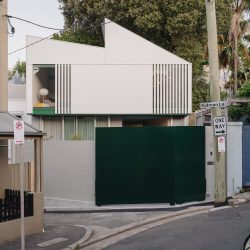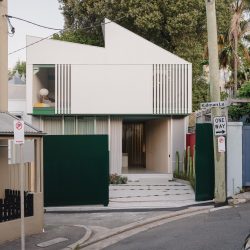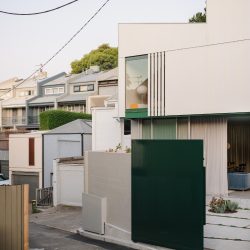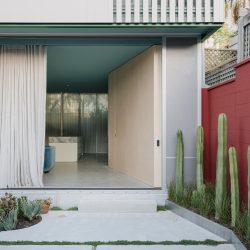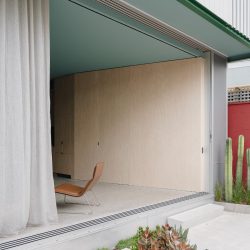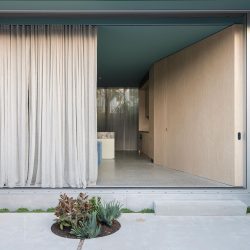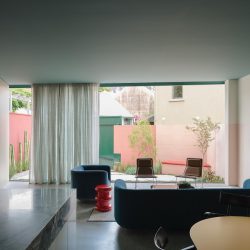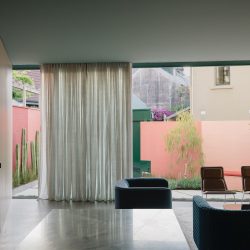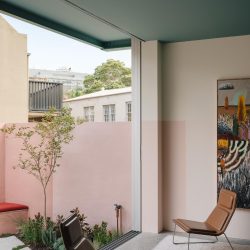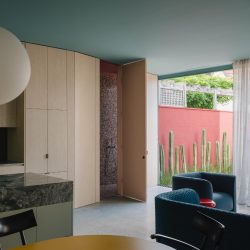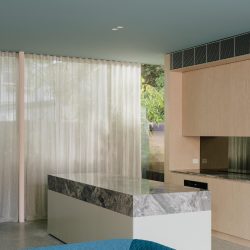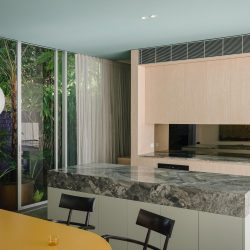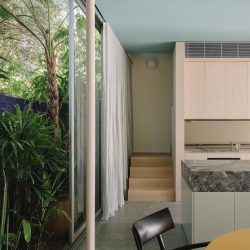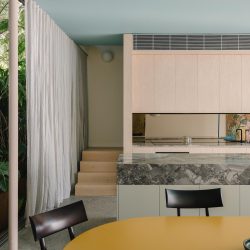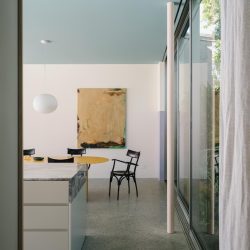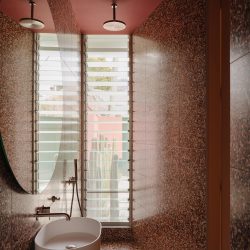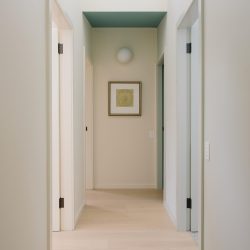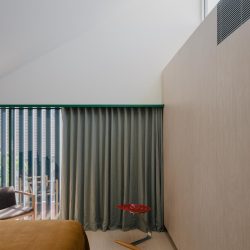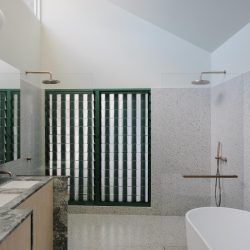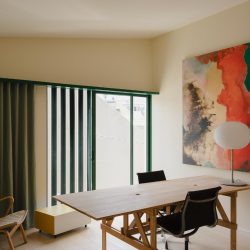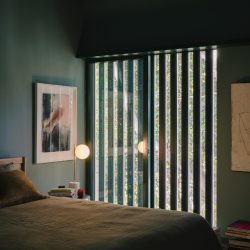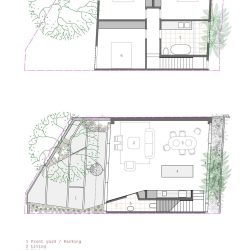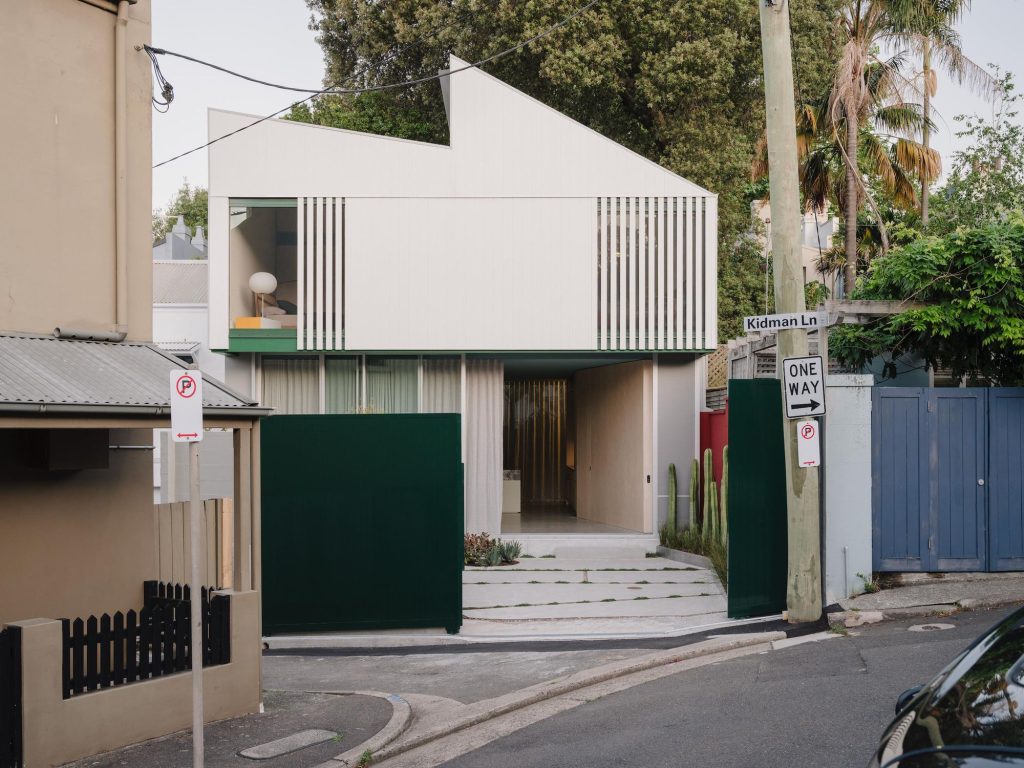
Plus Minus Design . photos: © Clinton Weaver
The house is located on a small but prominent site in the inner Sydney suburb of Paddington – a suburb comprised largely of late nineteenth century Victorian style terrace housing.
The ground floor is essentially one large space, with the private courtyard garden extending the open-plan lower living and dining areas. The courtyard is set down from the interior to provide a comfortable seat at the threshold when the doors are fully open. A bathroom and staircase are cleverly hidden behind a joinery wall that includes the kitchen. A small rear garden completes the ground floor.
Upstairs, 4 rooms – including a generous bathroom – and a wide hall each have a distinct character created by natural light, plan orientation and colour choices. The upstairs rooms are deliberately flexible and can be used interchangeably as bedrooms, office space or separate living areas, depending on seasons, mood or changing circumstances.
The sawtooth roof – inspired by a nearby warehouse – provides generous ceiling heights (without overshadowing neighbours) and lets abundant light into the plan’s centre while providing cooling cross-ventilation to both levels.
Detailing was direct, with a thoughtful arrangement of standard components. Vibrant colour design animates and amplifies spatial character and eliminates the need for luxury materials or costly applied finishes.
In an example of close collaboration across disciplines, colour and vegetation are stitched into the space to become inseparable from the architecture. An internal colour datum matching external garden wall heights connects the interior to front and rear yards. This extends the sense of openness throughout the ground level, inside and out. The landscape design forms the basis for a colour chart that informs walls and ceilings, while elements of the garden and its colours borrow from the surrounding neighbourhood to visually extend the home beyond the site boundaries.
Despite being completely different from neighbouring terrace houses, the home fits satisfyingly into the strictly controlled heritage suburb. Not only did Council approve what may have been considered a controversial response to heritage, but neighbours frequently praised the home during construction, with one noting on completion “you’ve renovated the whole street!”
_


